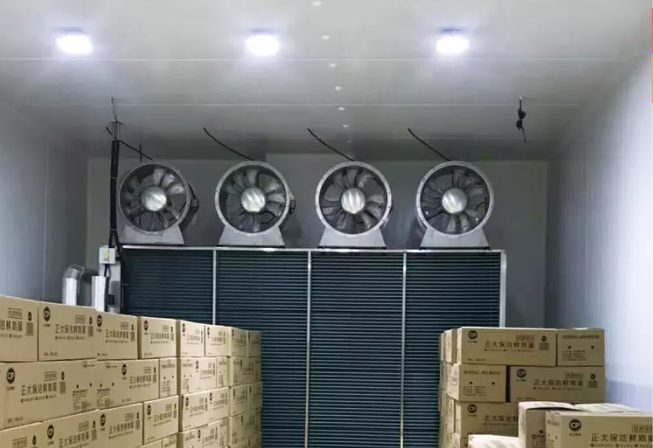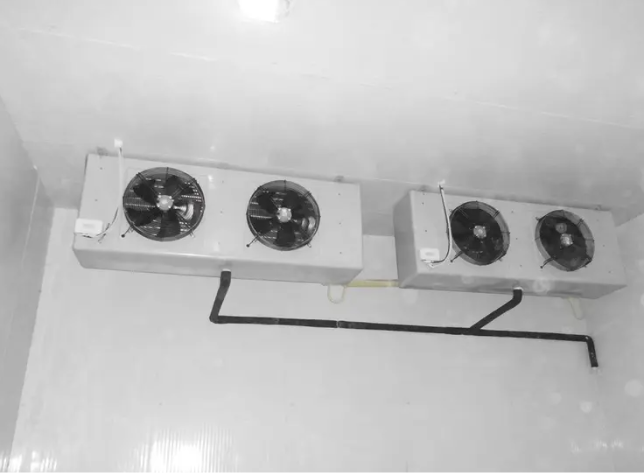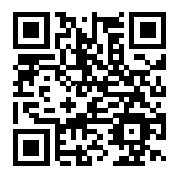Cold rooms are essential in industries like food, pharmaceuticals, and more. But what temperature should these rooms be set at? In this post, we'll explore the ideal temperature ranges for cold rooms based on the products stored. You'll learn why temperature control is crucial for preserving food, medicine, and other goods.
Why is Temperature Important for Cold Rooms?
The Role of Temperature in Food Safety and Preservation
Temperature plays a vital role in preserving food quality and ensuring safety. The wrong temperature can cause spoilage, bacterial growth, and loss of flavor, texture, or nutritional value. For instance, meat should be stored at -1°C to 3°C to retain its freshness and avoid bacterial growth. Fruits and vegetables need a cool environment, typically 2°C to 4°C, to maintain their quality for longer periods.
Food Item | Impact of Wrong Temperature |
Meat | Bacterial growth, spoilage |
Dairy | Loss of flavor, texture degradation |
Fruits and Vegetables | Faster spoilage, reduced shelf life |
Fish | Bacterial contamination, texture loss |
Proper temperature control ensures that food remains safe for consumption and has a longer shelf life, preventing waste and financial losses.

Temperature Regulation for Non-Food Items
Temperature is equally crucial when storing non-food items like pharmaceuticals and chemicals. Many medications, especially vaccines and biologics, require strict temperature regulation to maintain their potency. For example, some medications must be stored at temperatures between 2°C and 8°C to stay effective. Chemicals used in industries like manufacturing and research also need controlled environments to prevent degradation or hazardous reactions.
Item | Impact of Incorrect Temperature |
Pharmaceuticals | Loss of effectiveness, safety risks |
Chemicals | Degradation, potential dangerous reactions |
Vaccines | Reduced efficacy, ineffective treatment |
Maintaining the correct temperature for these goods is not only a matter of quality but also of safety, preventing accidents and ensuring that products function as intended.
What Is the Ideal Temperature for a Cold Room?
Ideal Temperature Ranges for Cold Rooms
The ideal temperature for a cold room varies based on what you're storing. Different products require specific temperatures to maintain freshness and prevent spoilage. Here’s a quick guide to the temperature ranges for common items stored in cold rooms:
Product | Ideal Temperature Range | Relative Humidity |
Meat and Poultry | -1°C to 3°C | 85-95% |
Fish and Seafood | 0°C to 4°C | 65-70% |
Dairy Products | 2°C to 4°C | 65-70% |
Vegetables and Fruits | 2°C to 5°C | 80-95% |
Cold rooms are essential for storing a variety of items such as meats, seafood, and dairy products, each requiring specific conditions. For example, meat is best stored at temperatures just above freezing to keep it fresh, while fish needs a slightly higher temperature to maintain its delicate texture.
By maintaining the correct temperature and humidity levels, you ensure the quality and safety of stored products.
Factors Influencing Ideal Cold Room Temperature
Product Characteristics
The nature of the product significantly influences the ideal cold room temperature. Different items have unique temperature requirements to maintain their quality:
● Meat: Meat needs to be stored between -1°C and 3°C. This helps prevent bacterial growth and ensures freshness.
● Vegetables: Root vegetables like carrots and potatoes are best kept at 2°C to 4°C. This prevents premature sprouting and spoilage.
● Dairy: Dairy products like milk and cheese should be stored between 2°C to 4°C to maintain their texture and prevent souring.
Certain products, like ripening fruits, require specific temperature control. For example, bananas need to be stored at 10°C to 15°C for optimal ripening. Additionally, flowers like tulips or orchids need cool storage at 1°C to 5°C to preserve their freshness.
Regulations and Standards
Industry regulations also play a role in determining the ideal cold room temperature. For example:
● HACCP (Hazard Analysis Critical Control Point) is essential for the food industry. It sets food safety standards, ensuring proper temperature control to prevent contamination and spoilage.
● GMP (Good Manufacturing Practices) are crucial for pharmaceutical storage. These standards ensure that medications are stored within a controlled temperature range, maintaining their potency and safety.
These regulations help define the precise temperature conditions needed for different industries. Adhering to them ensures compliance and product safety, especially when dealing with perishable goods or temperature-sensitive items.
How to Determine the Best Temperature for Your Cold Storage
Assessing the Storage Requirements of Your Products
To set the right temperature for your cold storage, you need to first evaluate the specific needs of your products.
● Frozen Products: Items like meat, seafood, and ice cream require freezing temperatures, typically between -18°C to -25°C.
● Refrigerated Products: Fresh produce, dairy, and pharmaceuticals need to be kept between 2°C to 8°C to remain fresh and safe.
● Special Cooling Needs: Some items, like ripening fruit (e.g., bananas) or flowers, need a more specific temperature range to maintain quality. For instance, bananas should be stored at 10°C to 15°C.
When setting the temperature, consider factors like shelf life, the risk of spoilage, and whether your storage method complies with regulations. For example, some items may spoil faster if kept at the wrong temperature, while others may require strict legal compliance for storage conditions (e.g., pharmaceuticals and food safety standards).
Product | Temperature Range | Considerations |
Frozen Foods | -18°C to -25°C | Ensures preservation and prevents spoilage |
Fresh Produce | 2°C to 8°C | Maintains freshness and reduces waste |
Dairy | 2°C to 4°C | Prevents spoilage and maintains quality |
Flowers | 1°C to 5°C | Preserves freshness for longer shelf life |
Using Temperature Monitoring Systems
To maintain the ideal temperature in your cold storage, using temperature monitoring systems is essential. These systems help you keep a close eye on the conditions inside your storage.
● Temperature Sensors: These devices monitor the internal temperature continuously, ensuring that it stays within the required range. Sensors can be set up at different points in the cold room to track temperature fluctuations.
● Remote Monitoring Systems: These systems allow you to check the temperature of your cold storage in real-time, even when you're not on-site. Alerts can be set up to notify you if the temperature goes out of range, so corrective action can be taken immediately.
Continuous temperature monitoring is crucial to prevent unexpected changes in temperature, which could lead to spoilage or unsafe conditions. These systems help ensure that the cold storage remains in optimal condition, preventing product loss and ensuring compliance with industry standards.
System | Benefit |
Temperature Sensors | Continuous monitoring of storage conditions |
Remote Monitoring | Real-time temperature tracking from anywhere |

Common Mistakes in Cold Room Temperature Management
Overlooking Humidity Control
Humidity control is just as important as temperature when it comes to food preservation. Maintaining the correct humidity levels prevents issues like freezer burn and product degradation. For example, if humidity is too low, vegetables can dry out, losing both weight and texture.
Improper humidity can also cause freezer burn in frozen foods, which ruins texture and flavor. This happens when moisture evaporates from the surface of food, often due to low humidity levels in the cold room.
Issue | Result | Example |
Low Humidity | Dry, shriveled food | Vegetables losing freshness |
High Humidity | Increased spoilage or mold | Mold growth on perishable items |
Inconsistent Temperature Monitoring
Fluctuating temperatures in cold rooms can lead to spoilage and unsafe conditions for perishable goods. Even small changes in temperature can harm products, especially when frozen foods are exposed to temperatures above their ideal range.
For example, if meat is stored at fluctuating temperatures, bacteria may grow, causing it to spoil quicker. Using a temperature monitoring system ensures that the cold room stays within the required temperature range.
To avoid temperature inconsistencies, regular checks are needed. Installing temperature sensors and using remote monitoring systems can help maintain stable conditions and avoid problems.
Issue | Effect | Solution |
Temperature Fluctuations | Increased spoilage, safety risks | Use continuous monitoring systems |
Lack of Monitoring | Unnoticed temperature shifts | Install temperature sensors |
Conclusion
Maintaining the right temperature is crucial for storing different products. Meat, dairy, and vegetables all have specific temperature ranges to ensure their safety and quality.
Regular temperature checks, proper insulation, and reliable monitoring systems are key to effective cold room management. Ensure the right conditions are maintained to preserve your products and comply with industry standards.
FQA
Q: What is the best temperature for storing meat in a cold room?
A: Meat should be stored between -1°C to 3°C with 85-95% humidity.
Q: Why is humidity control important in a cold room?
A: Proper humidity levels prevent freezer burn and maintain the quality of stored goods, especially food.
Q: How often should cold room temperatures be checked?
A: It is essential to regularly monitor the temperature, particularly for long-term storage of sensitive products.
Q: What happens if a cold room's temperature is too high?
A: If the temperature rises above the ideal range, perishable goods may spoil or lose quality.



